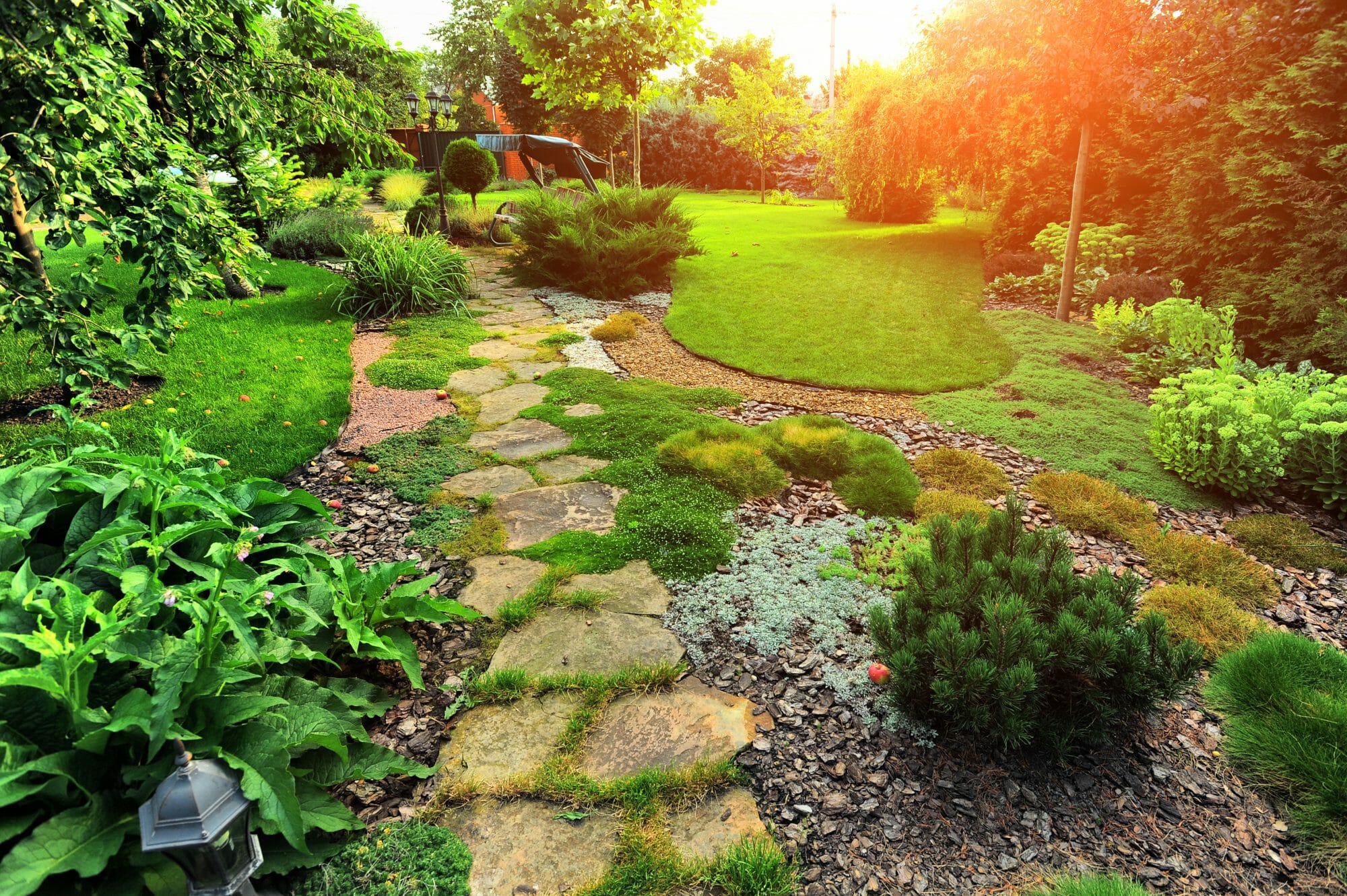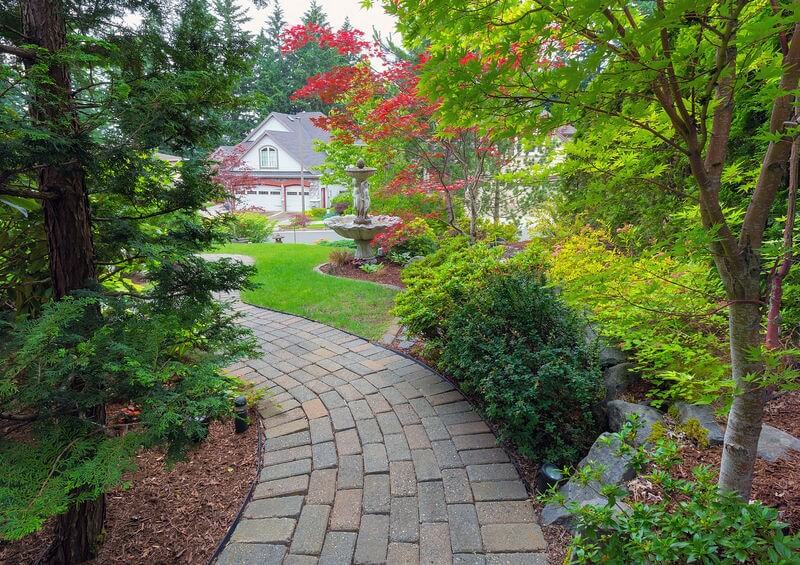All about Hilton Head Landscapes
All about Hilton Head Landscapes
Blog Article
Hilton Head Landscapes Fundamentals Explained
Table of ContentsThe Greatest Guide To Hilton Head LandscapesHilton Head Landscapes Can Be Fun For AnyoneHow Hilton Head Landscapes can Save You Time, Stress, and Money.Hilton Head Landscapes Can Be Fun For EveryoneAbout Hilton Head LandscapesHilton Head Landscapes for BeginnersNot known Facts About Hilton Head LandscapesA Biased View of Hilton Head Landscapes
Form compatibility is likewise a major element of unity in designone or more strikingly different forms benefit contrast and focus, but generally all various other types ought to have some resemblances for a linked appearance. Texture describes just how rugged or fine the surface area of the plant or hardscape product feels and/or looks.
Instances of plants with rugged appearance include philodendrons, agaves, bromeliads, hollies, palms, and hydrangeas. Features that develop fine appearance include little vegetation; thin, strappy fallen leaves (turfs) or tall, slim stems; tiny, dense branches and small branches; long stems (creeping plants); and tiny, delicate flowers.
All About Hilton Head Landscapes
A lot of plants are moderate texture, in that they can not be called having either rugged or great appearance. They are defined by medium-sized fallen leaves with straightforward forms and smooth sides. The average-sized branches are not largely spaced neither extensively spaced, and the overall form is normally rounded or mounding. Medium-textured plants work as a history to web link and link the crude- and fine-textured plants.

To make an area feel smaller, place the coarse textures along the outer perimeter and the fine textures closest to the viewer. The information of the crude texture makes the plants show up closer and makes the room really feel smaller sized. The viewed structure of plants can likewise alter with the distance from the plant.
Hilton Head Landscapes for Beginners
Bold colors enhance the comparison and make the appearance show up coarser, while muted colors can squash structure. Hardscape with a coarse texturesuch as really rough rocks and vibrant, big timberstends to make all plant product appear more moderate textured. Developers frequently develop a structure study (Figure 8) theoretically to assist decide the setup of plant materials.
Shade in plant material and hardscape adds rate of interest and selection to the landscape. Shade is the most conspicuous component in the landscape and is usually the focus of a lot of property owners; nonetheless, it is also the most momentary component, usually lasting only a couple of weeks a year for specific plants.
Hilton Head Landscapes for Dummies
A basic summary of the color wheel includes the three primary colors of red, blue, and yellow; the three secondary colors (a mix of 2 primaries) of green, orange, and violet; and 6 tertiary shades (a mix of one surrounding primary and additional color), such as red-orange. Color theory explains the relationship of shades per various other and how they need to be used in a composition.

Comparable (occasionally called unified) shade systems are any 3 to 5 shades that are surrounding on the shade wheel, such as red, red-orange, orange, yellow-orange, and yellow, or blue, blue-violet, and violet (landscape design hilton head). The colors relate to every other because they usually include two primaries blended to develop an additional and two tertiary colors, which implies they share common homes
Corresponding shades are often found normally in blossoms; a common set is yellow and violet. Color is found in the blossoms, foliage, bark, and fruit of plants.
Fascination About Hilton Head Landscapes
Green vegetation in all its various shades is the dominant color by quantity, however other shades capture interest quicker due to their high comparison to the color environment-friendly. Shade is also located in structures, rocks, pavers, wood, and furnishings. The majority of colors in natural materials, such as rock and wood, are generally muted and have a tendency to be variations of brownish, tan, and light yellow.
Shades have properties that can influence emotions, spatial assumption, light quality, equilibrium, and focus. Great colors tend to be calming and should be made use of in locations for relaxation and serenity.
Things about Hilton Head Landscapes
Great colors tend to decline and are perceived as being farther away, making a room feel bigger. Color can likewise be used to record attention and direct sights.
As an example, bright yellow, which has the highest possible strength, also has a high contrast with all various other colors (typically referred to as a "pop" of shade) and should be utilized moderately. A percentage of extreme shade has as much aesthetic weight as a large amount of a much more suppressed or weak shade.
Similar (sometimes called harmonious) color plans are any kind of 3 to 5 shades that are surrounding on the shade wheel, such as red, red-orange, orange, yellow-orange, and yellow, or blue, blue-violet, and violet. The colors belong to every other since they commonly consist of 2 key shades blended to create a secondary and 2 tertiary shades, which suggests they share common homes.
The smart Trick of Hilton Head Landscapes That Nobody is Discussing
They have a tendency to have high contrast in between them. One of the most typical sets are violet and yellow, red and environment-friendly, and blue and orange. Corresponding colors are typically found normally in blossoms; a common pair is yellow and violet. Shade is discovered in the flowers, vegetation, bark, and fruit of plants.
Environment-friendly vegetation in all its various tones is the dominant shade by amount, however various other shades record interest extra conveniently due to their high contrast to the shade eco-friendly - landscape design hilton head - https://h1tnhdlndscps.creator-spring.com. Shade is additionally found in structures, rocks, pavers, wood, and furnishings. Many shades in natural products, such as rock and wood, are typically soft and tend to be variations of brownish, tan, and pale yellow
The 5-Minute Rule for Hilton Head Landscapes
Color is a vital aspect for developing interest and range in the landscape. Shades have properties that can affect emotions, spatial understanding, light top quality, equilibrium, and focus. One residential property of shade is defined relative to temperaturecolors seem amazing or cozy and can influence feelings or sensations. Trendy shades often tend to be soothing and must be made use of in locations for leisure and tranquility.
The "temperature level" of shades can additionally influence the perception of range. Cool colors tend to recede and are perceived as being further away, making a room feel bigger. Cozy shades often tend to breakthrough and are regarded as being closer, making a space really feel smaller sized. Color can additionally be made use of to catch attention and straight sights.
As an example, bright yellow, which has the highest strength, likewise has a high contrast with all various other see post colors (often referred to as a "pop" of color) and should be conserved. A percentage of intense shade has as much visual weight as a large amount of a more restrained or weaker shade.
Report this page